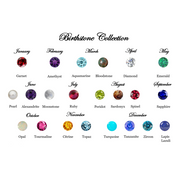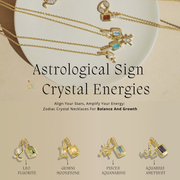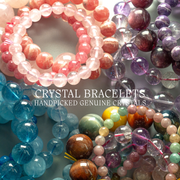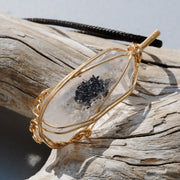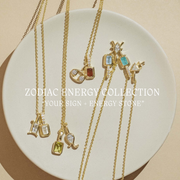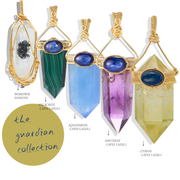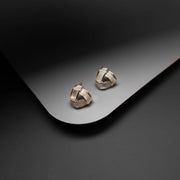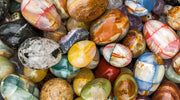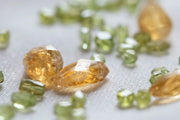Pearl History
Ancient Origins
Pearl is one of the oldest and most cherished gemstones in human history, revered long before diamonds or sapphires. Unlike other gems that form within the earth, pearls are born from the sea—created by oysters and mollusks when layers of nacre form around an irritant inside their shells. The name “pearl” comes from the Latin perna, meaning “leg,” due to the shellfish’s shape. Ancient Egyptians buried their dead with pearls as symbols of eternal life, while the Chinese believed pearls offered protection from fire and dragons.

Cultural Significance
Throughout history, pearls have been regarded as symbols of purity, wisdom, and elegance. In ancient Rome, they represented wealth and social standing—so much so that only the elite were permitted to wear them. During the Renaissance, pearls were prized above all other gems, adorning queens, nobles, and clergy as a mark of divine beauty. In Hindu mythology, pearls were considered “teardrops of the moon,” symbolizing love and compassion. Even today, pearls remain timeless symbols of grace and sophistication, often associated with weddings, wisdom, and new beginnings.

Symbolic Uses Through History
Across cultures, pearls have embodied harmony and spiritual transformation. They represent emotional balance and the connection between the physical and spiritual worlds. In metaphysical traditions, pearls are seen as stones of intuition, nurturing energy, and calm reflection. Their gentle glow reminds us that beauty and strength can arise through patience and inner harmony.

Table of contents

Origin
Japan – Renowned for Akoya pearls, known for their perfect roundness, brilliant luster, and classic white hue.
French Polynesia – The home of Tahitian black pearls, which display a natural iridescence of peacock, silver, and green tones.
Australia and the Philippines – Famous for South Sea pearls, the largest and rarest type, prized for their golden or silvery sheen.
Feature
Chemical Composition: CaCO₃ (Calcium Carbonate) – primarily composed of aragonite and conchiolin, forming layers of nacre inside mollusks.
Mohs Hardness: 2.5 to 4.5 — relatively soft, requiring delicate care to maintain luster and avoid scratches.
Color: Pearls come in shades of white, cream, pink, silver, gold, and black. Their color and luster depend on the mollusk species, water quality, and environment. The signature iridescence—known as “orient”—results from light refracting through layers of nacre.
Symbolism: Pearl symbolizes purity, serenity, and wisdom. Spiritually, it represents emotional healing, self-reflection, and balance, encouraging peace and integrity.
-
Chakra:
Crown Chakra (Sahasrara): Promotes spiritual awareness and divine connection.
Heart Chakra (Anahata): Encourages compassion, emotional healing, and inner peace.
-
Zodiac:
Cancer
Gemini
Benefits
Emotional Balance and Calmness
Pearl is known as the “Stone of Serenity.” Its soothing energy stabilizes emotions and helps release stress and anxiety. Wearing pearl jewelry or meditating with pearls promotes calmness and emotional clarity, making it especially beneficial for those who feel overwhelmed or sensitive to external pressures.
Purity and Wisdom
Pearl represents purity of thought and heart. It encourages self-reflection and helps one connect with their inner truth. This makes it an excellent gemstone for meditation, mindfulness, and spiritual growth. Its reflective nature teaches that wisdom and beauty develop over time through patience and perseverance.
Love and Harmony
Associated with the Heart Chakra, pearls attract love and nurture harmonious relationships. They promote forgiveness, compassion, and understanding between partners. Traditionally, pearls are worn by brides as symbols of purity and lasting love.
Protection and Good Fortune
Throughout history, pearls have been seen as protective amulets. Sailors carried them for safe voyages, while ancient warriors believed they would bring victory in battle. In modern metaphysics, pearls are said to protect the aura, deflect negativity, and invite good luck and prosperity.
Physical Healing
In holistic healing, pearls are thought to balance hormone levels and aid the digestive and reproductive systems. They are also believed to strengthen the immune system and promote glowing skin. Their calming vibrations can reduce tension and support restful sleep.
Type
Natural Pearl
Formed without human intervention, natural pearls are extremely rare and highly valuable. They develop over many years when a natural irritant, such as sand or a parasite, triggers nacre formation inside an oyster.
Cultured Pearl
Most modern pearls are cultured—created by deliberately inserting an irritant into the oyster to stimulate nacre growth. They are identical to natural pearls in composition and beauty but more accessible.
Akoya Pearl
Akoya pearls, primarily from Japan, are known for their mirror-like luster and perfectly round shape. They symbolize classic beauty and are often used in fine jewelry.
South Sea Pearl
Produced mainly in Australia and the Philippines, South Sea pearls are among the largest and most luxurious. Their silvery-white or golden tones represent wealth, success, and inner confidence.
Tahitian Pearl
Tahitian pearls, or black pearls, are naturally dark with overtones of peacock green, silver, and blue. They symbolize mystery, strength, and individuality.
Freshwater Pearl
Cultivated mainly in China, freshwater pearls come in diverse shapes and colors, offering an affordable yet elegant option. They are associated with creativity, healing, and emotional renewal.
Care & Maintenance
Cleaning
Clean pearls gently using lukewarm water, mild soap, and a soft cloth. Avoid harsh chemicals, detergents, or ultrasonic cleaners, which can damage their nacre.
Storage
Store pearls separately from other jewelry to prevent scratching. Keep them in a soft pouch or silk-lined box and away from heat or direct sunlight, which can cause drying and discoloration.
Handling
Pearls should be worn often, as the body’s natural oils help maintain their luster. However, avoid contact with cosmetics, perfumes, and acidic substances. Put on pearls last when dressing and remove them first when undressing.
FAQs
Q: Is pearl a birthstone?
A: Yes, pearl is the traditional birthstone for June, symbolizing purity, wisdom, and love.
Q: Can pearls lose their shine over time?
A: Yes, pearls can dull if not properly cared for. Regular gentle cleaning and occasional wear help preserve their natural luster.
Q: Are natural pearls more valuable than cultured pearls?
A: Yes, natural pearls are far rarer and therefore significantly more valuable, though cultured pearls are equally beautiful and durable.
Q: What does pearl symbolize spiritually?
A: Spiritually, pearl symbolizes truth, serenity, and emotional balance. It enhances self-awareness and fosters harmony between the mind and spirit.
Q: Can pearls be worn daily?
A: Yes, but they require gentle care. Avoid exposure to harsh chemicals or rough surfaces to maintain their elegance and sheen.
Final Thoughts
Pearl: Benefits, Properties and Meaning of the Stone illustrate why this timeless gem continues to embody elegance, purity, and emotional strength. Formed within the depths of the sea, pearls symbolize wisdom gained through experience and beauty born from resilience. Whether worn as a symbol of love, used for healing, or cherished as a spiritual talisman, pearls inspire grace and tranquility. Their luminous glow reminds us to embrace inner calm, radiate kindness, and find harmony in life’s natural flow. Truly, pearls are not just gemstones—they are living reflections of the soul’s quiet power.

